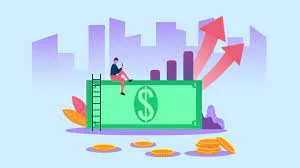Circular Economy Finance: All You Need to Know
Circular Economy Finance: All You Need to Know
The shift to a circular economy will positively affect the financial system, society, and environment. By facilitating financing for businesses and projects using circular economy business models, financiers play a critical role in hastening this change.
The circular economy presents a significant potential for the financial sector to fulfil its climate commitments and other ESG goals while utilizing new and improved development opportunities and long-term value creation. Circular economy finance and investment will increase as the circular economy concept becomes more widely understood. In particular, the market needs more understanding on how to define and use circular economy finance consistently.
Continue reading this article and get a collective understanding of circular economy finance.
What is a Circular Economy?
In a circular economy, materials and products are maintained for as long as possible. As a result, the consumption of resources and waste is reduced, and when a product approaches the end of its shelf life, it is reused to add value. This can significantly impact the economy by fostering creativity, expansion, and job creation.
Increasing societal welfare is the goal of a circular economy, which seeks to detach economic growth from consuming finite raw materials and resources. This can be done by progressively eliminating waste from economic activity, preserving products and materials for economic use, and renewing natural systems.
What is Circular Economy Finance?
Any financial instrument that uses investments solely to finance or re-finance eligible new and existing businesses or projects in the circular economy is considered circular economy finance.
Principles of Circular Economy Finance
- Zero waste is the characteristic of a fully circular economy. Everything is made repairable, and reusable, so nothing is wasted.
- There are two categories of industrial ingredients: recyclable materials, such as paper or cloth, and disposable ones. The second group of components is the technological ones, such as recyclable plastic and metal. Everything must fall into one of the two categories to enable either reuse or restoration.
- Only completely renewable energy sources are necessary for this industrial cycle to be sustainable.
- Customers are now users instead of consumers. This implies that the businesses will seek their products back once they have finished using the materials. Incentives to return items once used may emerge from this, or there might be an increase in leasing, renting, and sharing.
Benefits of Circular Economy
- Reduces the dependency on non-renewable resources: People now consume non-renewable resources like metal ores and oil as if there is an endless supply, which is true. Reusing materials and recycling outdated goods are examples of circular economy practices. Zero waste and wiser resource usage are two characteristics of a fully circular economy.
- Decreases carbon emissions: up to two-thirds of greenhouse gas emissions come from warehouse operations. Since its key premise focuses on the sustainable management of materials, a circular economy will aid in minimizing that. The circular economy improves materials management by reusing items and materials, encouraging renewable resources, and maintaining sustainable resources.
- Aims to produce no waste: Reusing materials and products creates a zero-waste model, a cornerstone of the circular economy. Buying refurbished products, leasing, or renting instead of owning, and other more conservative habits are encouraged, which increases excess income.
- Offers benefits to the consumer: A circular economy offers many advantages to consumers and benefits for the environment. Because the reuse of materials minimizes planned obsolescence; as a result, your products will last longer.
- Provides businesses with fresh prospects: The circular economy model offers numerous advantages. More business prospects also mean more job availability. By reusing the resources, we currently have rather than relying on finite resources; existing businesses can also benefit from a more reliable supply of resources.
A Way to Transform our System
Major transformations in the way economies and communities are run are sought by sustainable development. The circular economy model creates a space for innovation and synchronization between businesses, our way of life, and waste management. While the circular economy in this country is still in its infancy, most industries have stepped up to speed up their efforts to adopt it.




